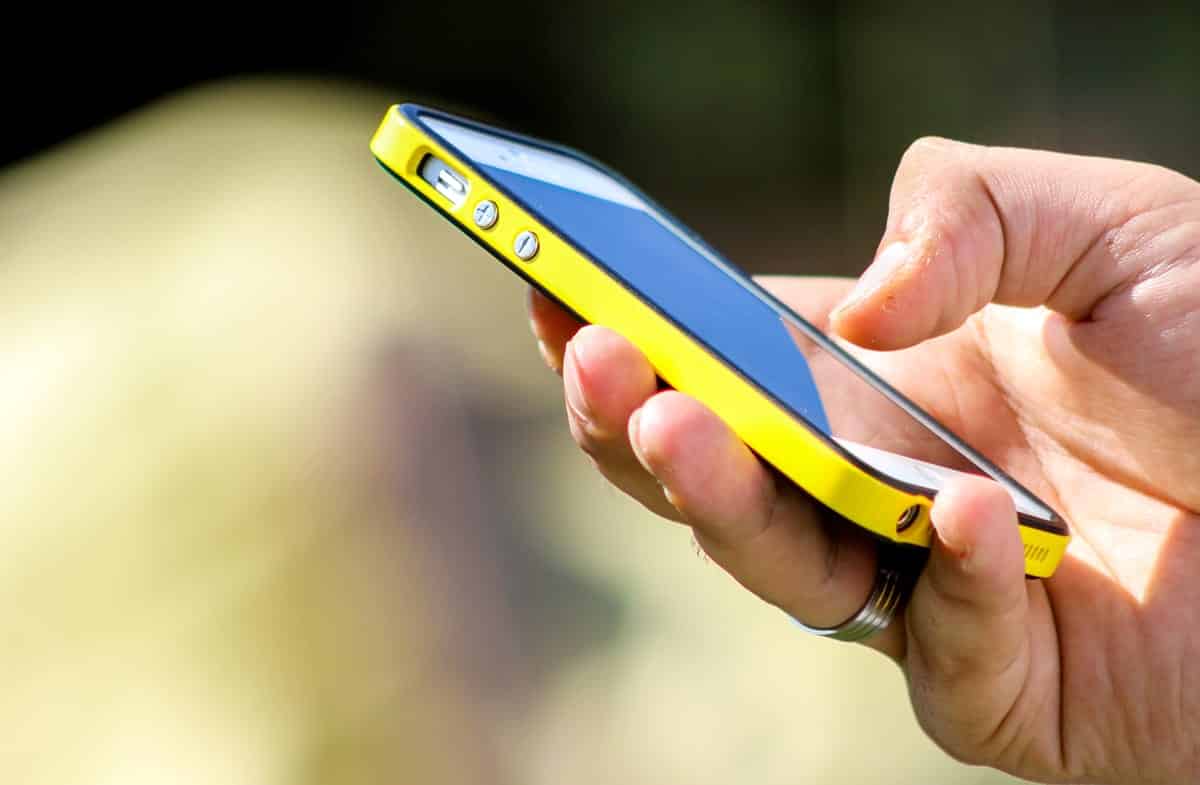As mobile app designers, it’s our job to create compelling and engaging mobile apps that keep people coming back. We need people to love our apps. After all, the success of our mobile app design is usually measured in engagement, number of downloads, and time spent in the app. If they love our latest app, they’ll use it frequently and tell all their friends about how much they use it. Right?
Well, sure. Maybe. There are certainly times when this is true. It’s great when users find an app they simply cannot live without and tell all their friends about it — something that certainly leads to more downloads and higher chart rankings. We all want to design an app that lands in the top ten in the App Store and Google Play. It’s probably a major goal of every single mobile app designer — and not a bad one by any means.
But just because your app is in the top ten, doesn’t mean it’s “loved.” It just means people are downloading it a lot. It could mean they’re downloading, then deleting or downloading it out of obligation (and the app just sits on the last page of their home screen).

Lately, we’ve been wondering about how our designs are affecting our users’ lives and we think it’s time we look into the ethics of mobile app design. Are we just rolling in like a freight train and taking over their precious time without caring how they feel about it? Are they using our app because they get fulfillment from it or is it a timesink that they don’t actually enjoy? Maybe our metrics say it’s a success because users are spending time in it — but is it really?
How People Use Our Mobile Apps
What’s the first thing you do when you wake up? A lot of us will say we roll over and check our phones. The usual culprits are email clients, Facebook, Twitter, and Instagram. We tap that little icon and wait for the number of emails we have to jump up or see how many new notifications we have, eager to see what important thing happened overnight that we don’t know about yet.
Let’s say you check all four of those apps. You’ll see some overlap in stories if you both “like” and “follow” some of the same people or businesses on each platform. These days, you’re likely to see some political discussion that annoys you. Maybe even some vacation photos from a high school classmate that make you envious — because you didn’t have a candlelit dinner on the beach in Bora Bora last night.
Before you know it, you’ve spent a good half hour looking at other people’s lives. It’s the perfect combination, really. We get to look at what other people are doing without actually having to interact with them at all. In the meantime, you’ve spent zero minutes actually living your own life. And social media mobile app design is absolutely built to make us lose track of time. You might have even made yourself late for work lusting over those beach photos. Time to bust out Waze to find the quickest route to work.

At work, you might be using productivity and note taking apps like Evernote. You might use Slack to keep in communication with coworkers, especially those who are traveling or working remotely. Lots of work groups use project or client management tools to keep everyone on the same page and organized.
People download our mobile apps because they’re looking for something, whether it’s something to help them be more productive, something to help them pass the time, or something to entertain them. We’re all too happy to help them in any of those areas and as a result, there are millions of apps available for download, no matter what platform you prefer.
Some mobile app designs are built for productivity, but many others are not. Waze wants to help you find faster ways of driving places (by avoiding traffic or construction), while Candy Crush is just trying to help you squeeze in some mindless entertainment in your spare time. But regardless of whether or not that time was considered “well spent” by the user, every single mobile app is measured by the same metrics — again, the number of downloads and time spent in the app. So the question remains: are we ethically using their time?
Using Time Wisely
Time is our most finite resource. We cannot create more of it, nor is there a substitute to replace it. Until we all get our own time turners like Hermione Granger, we’re stuck with 24 hours in a day, 7 days in a week, 365 days in a year and we have to figure out the best way to use that time. If we want to spend that half hour each morning jumping between social media apps, that’s our business — but if we regret that time later, we need to examine why.

Tristan Harris has given a lot of thought to this over the years. In 2011, he joined Google as a “Design Ethicist” when they acquired his company, Apture. What does that title mean? In his own words, his job as a Design Ethicist was to care about “how to design things in a way that defends a billion people’s minds from getting hijacked.”
This line of thinking led Harris to leave Google after three years to start another company. This time, it was a non-profit called Time Well Spent, which is designed to “align technology with… humanity.” In this role, he spends a lot of time talking (and writing) about bringing ethics into mobile app design.
Harris poses that part of mobile app design is essentially persuading people to use (and keep using) your app. How do we get people to engage with the app and other users? How do we get them to share posts, tag each other in photos, or “favorite” tweets? Harris asks, if part of design is about steering people’s thinking and behavior, how do we do so ethically?
Recently, Tristan Harris was a guest on the podcast Waking Up with Sam Harris (no relation). In his discussions with Sam, Tristan reminds designers that notifications make people want to pick up their phones to see what’s going on. We are actively taking that person away from their lives in that moment. And rarely does it stay a singular moment — they look at the notification and then go down the timeline rabbit hole. Or they’re down the rabbit hole before they even check the notification.
But Harris is careful when discussing Facebook, in particular. He says that their major goal is to make the world a more open and connected place — and you really can’t argue with the fact that they do, indeed, accomplish that goal. We can reconnect with people we haven’t spoken to in years and follow our friends as they travel.

The issue is that their measurement for success is engagement: how many users are on the app everyday and how often they share, comment on, and react to posts. Of course, this means that Facebook isn’t focused on how satisfying their app is — they just want people to use it as often as they can.
Aligning Mobile App Design with User Goals
Harris argues that in order to introduce ethics into our mobile app designs, we have to align our goals with those of our users. Do they want to unwind at the end of the day? Great! Give them a repetitive game that helps get their minds off their stressors. But if their goals involve practicing mindfulness, crushing candy won’t help them at all. In fact, games may actually detract from their goals. They need a meditation app.
How do we do figure out what they want? Well, surveys and polling are a good place to start, but we also don’t want to inundate our users with questions too often. Consider checking in with your users through an in-app poll about once every week or two though substantive questions, like if they feel satisfied after using the app, what their goals are when they use it, and if they feel they are reaching their goals.
From there, you can modify your mobile app design to more closely fit with your users’ intentions, which will allow them to feel more fulfilled when they use it. While Harris believes that these types of changes will need to come from the platforms themselves (Apple and Google), we think that there are also ways for designers to be more ethical in their delivery.
Mobile App Design Ethics
You have goals when you launch your newest mobile app design. Maybe that means a certain number of downloads in the first month or year — and there’s nothing wrong with that. You should have goals in mind because they give you something to work toward. The problem occurs when those goals directly conflict with those of your users.

Like we said, not all mobile app designs are meant to help someone accomplish a larger overarching goal in their lives. Sometimes, they just need to chill out at the end of the day or occupy their minds while they’re in a waiting room — and in that case, the goals of both user and designer are the same.
But looking at cases like social media, we have to wonder if “time spent in the app” is actually beneficial for users. Are they glad they spent time scrolling through their newsfeed or are they annoyed they stared at their phone for 30 minutes? The answer will vary, but we need to ask ourselves: do we really want our users to feel like our app wastes their valuable time?
The bottom line is that if we want our time (and our users’ time) to be better spent, we have to change the metric and that metric should shift based upon the driving force in that category. Mindfulness apps should be measured by how well they help users practice mindfulness in their everyday lives. Productivity apps should be measured by how productive people feel when utilizing the tools.
Remember that the most successful mobile app designs solve a problem. We can continue to seek innovative solutions for our users’ existing problems, but we must be mindful that we are creating meaningful solutions — not just another way to waste their time.
Proto.io lets anyone build mobile app prototypes that feel real. No coding or design skills required. Bring your ideas to life quickly! Sign up for a free 15-day trial of Proto.io today and get started on your next mobile app design.
How do you feel about the ethics of mobile app design? Let us know by tweeting us @Protoio!





